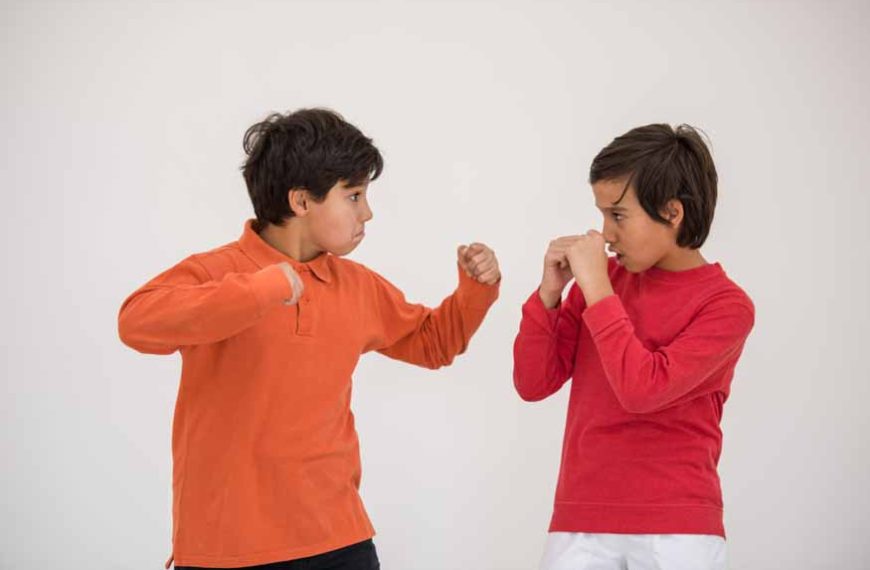What do all the greatest Books and Movies have in common? Answer: An Undercurrent of Conflict!It’s true, Conflict makes for some great ‘Drama’ on screen and even in the pages of a racy novel. However, it’s an entirely different ball game when you see it being played out in a classroom. The worst part is, that conflict might just lead to Violence!
There’s no telling when Conflict might arise. It might come out of the blue in even the most ‘Open’ classroom. If we cannot help prevent its occurrence, what might be the ways we can help resolve it?
In this article, you will be introduced to Conflict Resolution Skills, that we believe will help you in understanding Conflict better. We will also discuss the Importance of Conflict Resolution, as well as unlock some important Strategies for Conflict Resolution.
But first, let’s attempt to answer the question, ‘Why do Conflicts arise?’
Conflict Resolution: The ‘Why’ of Conflicts
If we have nurtured a sense of Positivity in the classroom, Why do Conflicts arise?The one thing that we must remember is,‘Conflicts are an integral part of human nature.’It’s true. There’s no escaping conflict anywhere. Needless to add, that means in the Classroom, too. The reason lies in the Diversity of human beings. Ironically, it is this very Diversity that makes us all special, that is the culprit behind those Conflicts.
The school is nothing but a mirror of society at large. It is in the environs of that classroom, that you will find those different points of view and even social differences. The very things that cause conflicts!
The Importance of Conflict Resolution
By now you might be thinking, if there’s nothing that can be done about stopping those conflicts from breaking out, why should we even care?
The fact is, there’s more damage that can be done from not handling or mismanaging those conflicts, than you might think.
Here is a list of reasons that shows us why Conflict Resolution in the Classroom is vital, for the sanctity of children and teachers alike.
- Boosts the Overall Learning Experience.
- Managing Emotions Better.
- Getting around the Blame Game.
When there is no attempt made to resolve conflicts properly, it affects the overall learning experience of the student. Conversely, students who find their conflicts resolved well, are far more ‘engaged’ and ‘attentive’ in the classroom.
How will children learn to manage their emotions, if they cannot resolve the underlying conflict? If not handled effectively at an early age, these uncontrolled emotions might coalesce into something worse. Like Anxiety, or perhaps Depression!
Inadvertently, most conflicts between children involve each kid blaming the other. If both children look down on each other, thinking that ‘the other’ is the one to blame and not themselves, how will the Conflict ever be resolved?
Creating a Peaceful Classroom: Strategies for Conflict Resolution
By now we know the value of Conflict Resolution Skills, vis a vis managing kids in the classroom. Time to set them in motion, with some effective Conflict Resolution Strategies.
Get them to Cool Off
When was the last time someone told you to take a ‘deep breath’?To do: Get both the children in a conflict, to cool down for a while. This could entail their taking some deep breaths. Once they have sufficiently cooled down, the moment is ripe to address the problem at hand.
Establish a Respectful Classroom Atmosphere
Children must know where the Line needs to be drawn. That precarious line, between what is Right and what is Wrong. To do: Understanding conflict is not limited to Adults. If children know that they have crossed a line in the classroom, it will be easier to get that conflict to end. And just how does one draw that ‘line’? It’s simple, really. All you have to do is establish firm Boundaries. Children need to know that if they cross them, there will be Consequences.
Garnering a Sense of Empathy for the Other
The first thing a child does when they feel they have been wronged, is to think of striking back!To do: Get children to understand the meaning of the phrase ‘An Eye for an Eye makes the World Blind.’ What you want to do here, is to have them see the situation through the eyes of the person who they think has wronged them. Tell them to ‘be’ that person, and think of how they might be feeling. That might just garner in them a sense of empathy, that will nip that Conflict in the bud!
Encourage them to express Emotions
When emotions are pent up for way too long, there will be an inevitable Explosion one day!To do: Do not let children ever reach the stage, where they find themselves indulging in an outburst of emotion. To this effect, encourage them to speak about their emotions as much as possible, in the classroom. That will go a long way, in helping them communicate better and of course, managing those emotions, too!
The Art of Compromise
The world would be such an amazing place, if everyone only learned how to Compromise!To do: Getting children to reach a compromise is not easy, but it’s the most practical thing to do when they find themselves in the midst of a conflict. The idea is to get them to Brainstorm together, to solve the problem. The teacher should give their ideas, only if they deem it necessary.
Taking responsibility for their actions
If we are not responsible for our own actions, we will never learn from our mistakes.To do: Children have to learn that they must hold themselves Accountable, for the actions they have taken vis a vis that conflict. That will help them in better Decision-making in the time to come.
At EuroKids, we do all we can to ensure that no Conflict escalates to a volatile stage. We believe that Conflict Resolution Strategies are vital, when it comes to helping children manage their Emotions and Communicating better.














